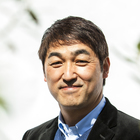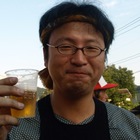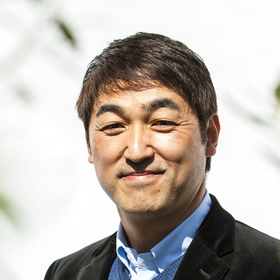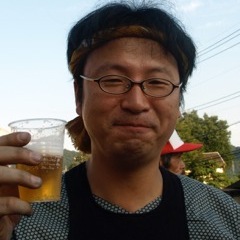Special Edition: “Disaster and Art―Exploring the Possibility of Art in Disaster Reconstruction from the Viewpoint of Disaster Prevention” Mini Mécénat Forum Report
At Net TAM, to further expand our continued efforts to consider the possibilities of art in different types of disasters as well as earthquakes, the theme of this content will henceforth be, “The Possibilities of Art in Disaster.”
For this issue as a special edition, we report on a one on one discussion organized by the Association for Corporate Support of the Arts Japan (Kigyo Mécénat Kyogikai) about “Disaster and Art―Exploring the Possibility of Art in Disaster Reconstruction from the Viewpoint of Disaster Prevention.” We invited Mr. Hirokazu Nagata, the president of NPO Plus Arts, which aims to solve social issues with the power of creativity, and Mr. Torao Ohsawa, the author of the Vol. 16th issue and associate senior researcher at the Art and Cultural Projects, NLI Research Institute, to give a wide range of talks on the relationship of disaster and art, the shifts in the minds of the people around them, and the concept of disaster prevention in the context of Japanese culture.
The Power of Art that Solves Problems in the Realm Beyond Common Sense
Ohsawa: Your perception that in Japan, disaster prevention education is its culture itself was striking. When I spoke with you before, you told me about catfish paintings. This is an Ukiyo-e from the Edo period, but it became very popular after the Great Ansei Earthquake.
Nagata: As a symbol of earthquakes, there was once a myth in Japan that said that when a catfish moved violently it caused an earthquake. The picture shows everyone chastising a catfish because they don’t want an earthquake to happen. I feel that the way in which people tried to inform others about large earthquakes with paintings, or by handing out printouts or archiving them in this way from the Edo period is a culture that is unique to Japan. There are a lot of catfish paintings, and carpenters are often depicted in them too. Because carpenters made money when earthquakes occurred, some paintings were drawn with sarcasm and satire showing them plotting bad deeds or actually trying to help the catfish.
Ohsawa: Some people are hitting the catfish with a kitchen knife or a stick, and for some reason a woman is hitting it with a shamisen. It is all very humorous, but you can understand that they were trying to show why earthquakes occurred in their customary thinking in the Edo period. Even though it’s not scientific, I think they were trying to inform people that things like that could happen. There are about 250 confirmed paintings, but it also says on wikipedia that catfish paintings spread rapidly among the common people as an amulet to protect them or as a spell to relieve anxiety, and a large number of works were created in about two months before the trend died down.
I feel that it is not simply a matter of disaster prevention and culture, but a kind of wisdom that is inherent in the Japanese people.
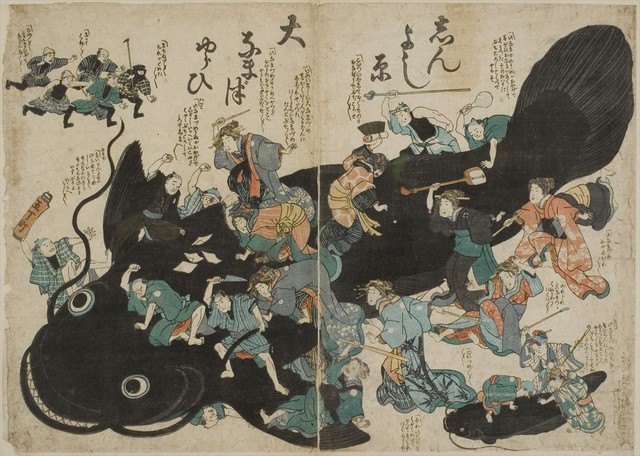
Facing Nature and Disaster
Ohsawa: Your work is said to be always related to “Disaster Prevention x Art.” You said that you “are not doing art per se,” so, you mean you do not feel that you are doing art.
Nagata: It is difficult to define art itself, but I do feel that I am doing something artistic. But, if you ask me whether I am creating art itself, I am not conscious of that. Artist Hiroshi Fuji often says that “art is super common sense,” and I really like that phrase. That art doesn’t lack common sense, but it transcends it. There are many ways to understand the role of art, but from the standpoint of working on social issues, when you step out or break away from something that is entrenched in stereotype or custom “that must be in a certain way,” I feel that Fuji's idea of “art as being super common sense” is very important and artistic.
Ohsawa: I can empathize very much with the idea of not being bound by conventional thinking and the efforts of solving problems in the realm beyond common sense.
And from another perspective, Ibaraki Prefecture was hit by a flood recently where there was also a large tsunami in the Great East Japan Earthquake. When a major disaster occurs and you prepare for the next one, is building a stronger levee, a higher seawall, or raising the ground by several meters truly the right thing to do for disaster prevention? I wonder if that was the case in the Edo period. What do you think about the attitude in dealing with disasters in the future?
Nagata: This is also quite a difficult point, and though you can't say that they are generally useless, and it is better to take all possible measures, disasters usually surpass their limits. With regards to the recent levee breach also, if you compare the precipitation of today with 30 years ago, it is overwhelmingly higher in this present age but the levees were built according to the standards of 25 to 30 years ago. So, what was considered common sense at that time is not common sense anymore. They don’t stand a chance.
In which case, of course, you need to make larger levees, but you can't prevent it unless you change your mindset a little. I don’t think there will be any fundamental change unless we take the standpoint of doing something together for the environment such as perhaps reducing the rain itself, instead of just dealing with it when it hits us. Of course, it can't be said in general, but I think that disaster prevention measures based on the idea of people trying to contain nature at the onset basically will not work.
Ohsawa: This may be a very big theme, but at the root of civilization or culture, there may have been a belief that nature was something to conquer or contain. Culture, which is derived from the word “cultivate,” has long been understood as something that stands face to face with nature. However, the role of ancient Japanese performing arts to quell the gods of the land or mourn the souls of the deceased feels more like living with nature rather than confronting it.
Nagata: You mean the attitude of staying close or living together.
Our project called, “Jishin ITSUMO,” (or Earthquake Always) is not based on “what if, it happens” but rather on the idea that “it will always happen, so let's be interactive.” Learn the mechanism of earthquakes and know how to deal with them. I think it's the same as interacting with people. You can’t interact with people unless you get to know them. If you don’t think like that, its’ just being unduly ignorant. For instance, the fact that you haven't looked at the hazard map of the local area of your residence, or not knowing what the land you’re living on was like in the past. Those kinds of history also have been essentially forgotten or divided up.
After 3.11, I also had a discussion about this with Mr. Fuji, and it seems that local history is being treated much too thoughtlessly. People are not interacting with it properly. I know nobody wants to interact with disasters, but you’ll have to interact with it anyway so it's better to know about it and learn how to interact with it. I hope we are conducting our program in that way. And Kaeru Caravan creates a point of contact for those interactions. We are working hard in trying to figure out how we can get people to pick up a manual and put it in their bags, and how to get them to become familiar with it.
Ohsawa: I think interacting with disaster is related to whether you know about your locality in your everyday life. People who have lived in an area for a long time know that the area will be quickly inundated when there is a flood, but newcomers do not know that at all. Or whether there is an interaction within the community where people feel an obligation to go and check on an old lady because she lives alone. Looking at the activities of the Kaeru Caravan, I feel that those things are what’s important.
Nagata: There is a wise phrase from a survivor who said that, “Greetings were also a form of disaster prevention,” and we are often made aware of such things when disasters occur. Because everything has become convenient and you can live without getting along with others, people tend to forget the true meaning of living as a community by getting along with other people in their daily lives and we are made keenly aware of that when there is a disaster. When a disaster occurs, everyone's awareness increases, and because there are people who become interested only at that time, I try my best to communicate what must be told, but I always wonder why as time goes on, those people return to their old ways and forget everything. Maybe that is the human truth...
Those who live in the city especially are mostly dependent people who think that someone will help them and things will turn out all right. Survival is not about that but rather depends on how many people there are who can help other people, and who can stand on their feet by themselves. Nowadays, we say, “development of people” and I think that’s what it’s all about. In trying to develop people, unless you create a place of learning based on super common sense, disasters and earthquakes will forever be a distant concept. People are concerned about it, but tend to set it aside for the time being, so I feel that the power of art is essential.
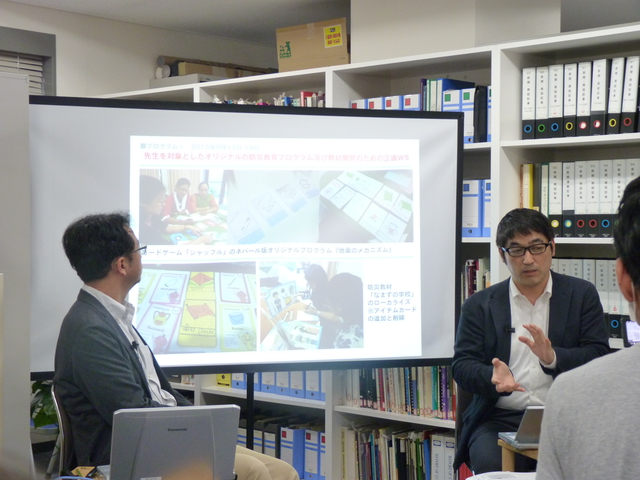
For a New Social Creation
Ohsawa: I would like to now present to you the activities of the Association for Corporate Support of the Arts Japan.
Immediately after the Great East Japan Earthquake on March 23, 2011, the Association for Corporate Support of the Arts Japan established the Great East Japan Earthquake Restoration Fund (GBFund). I would like you to read the message on the website, but personally, I was very impressed with the “Emergency Proposal for Social Creation {New Compact}” which was issued in March 2009.
“To overcome social crisis and restore Japan, we need to break away from the virtual, enormous, social image and create a real, life-size, sustainable society. And for such social creation, we believe that now is the time when it is urgently necessary to concentrate investment in culture. It is because culture is the embodiment of wisdom and the source from which new intangible aspects for social creation will be produced.”
Association for Corporate Support of the Arts Japan, “Emergency Proposal for Social Creation {New Compact}―Policy for the Regeneration of Local Communities through Cultural Promotion”(March 16, 2009) ※PDF
I respect the Association for Corporate Support of the Arts Japan for having issued a message like this two years before the disaster, and quickly launched the GBFund, but when I heard that the fund's target amount was 100 million yen, I thought it was much too high. However, it easily exceeded that and the target was raised to 200 million yen on the way. As of July this year, the total donation amounted to 140 million, and there were 239 grant activities.
The social crisis at the time of 2009 may have been due to the Lehman shock and the collapse of the bubble economy, but when we had to face a social crisis after the Great East Japan Earthquake and the nuclear power plant accident in Fukushima, I felt that we must have faith in the power of culture.
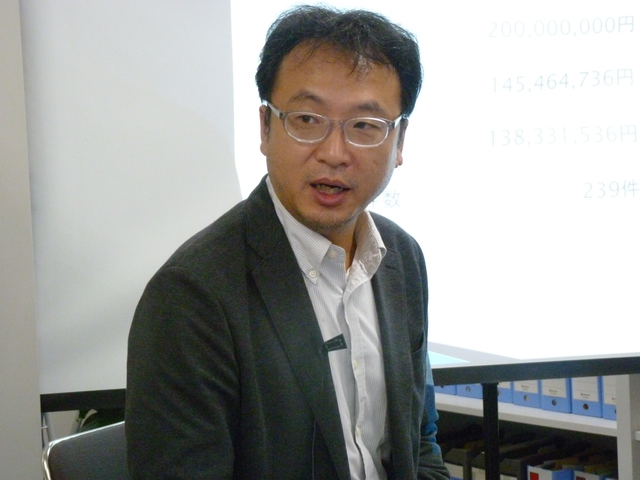
Staying Close without Forgetting the Sense of Powerlessness
Ohsawa: When the Great East Japan Earthquake occurred, many people thought, “What is the use of culture or art? How powerless are they in times like these,” and I also felt the same. However, if you actually take a look at the activities funded by the GBFund, you can see that there are various activities taking place. Judging from these results, I now think there are many things culture can do. Having witnessed the Great Hanshin-Awaji Earthquake yourself, you must have some thoughts on this issue.
Nagata: When you actually think in terms of what culture and design can do, they are in fact powerless. I feel even now that they are powerless. But I think someone who can take a step forward after understanding the powerlessness can make a real impact. According to my research of the exhibition: Earth Manual Project, which was a collection of creative activities in disaster-related fields from around the world, I found that projects which were trying to “show off their concept to do something for the disaster-stricken areas” were not being continued and there were some that seemed out of place and many weren’t doing so well. To be honest, there were a lot of activities that were ostentatious. After all, I think that humility, or activities with a firm sense of staying close are the ones that take root and continue and get passed on to the next generation. In that sense, I think your attitude and stance are most important. And the crucial thing is whether you are able to take a step forward without giving up even after understanding that powerlessness.
Ohsawa: When thinking about the theme of “disaster and art,” I think we should always keep that sense of helplessness we felt somewhere inside of us.
Nagata: That's right. When I have a chance to talk to young people about how to deal with a disaster, I talk about how I could not do anything right after the Great Hanshin-Awaji Earthquake and suffered feelings of helplessness for a long time. And how I encountered the development of Kaeru Caravan 10 years later and felt that my turn had finally come when I could dedicate my efforts. I tell them that there are ways you can get involved even after 10 years.
The bigger the disaster, the more you feel that there is very little you can do, but I think there is always something you can do however small it may be. You never know what that may be, or how much it entails or when that turn will come, but what is important is to keep thinking about the disaster and the stricken areas, and not to forget about them.
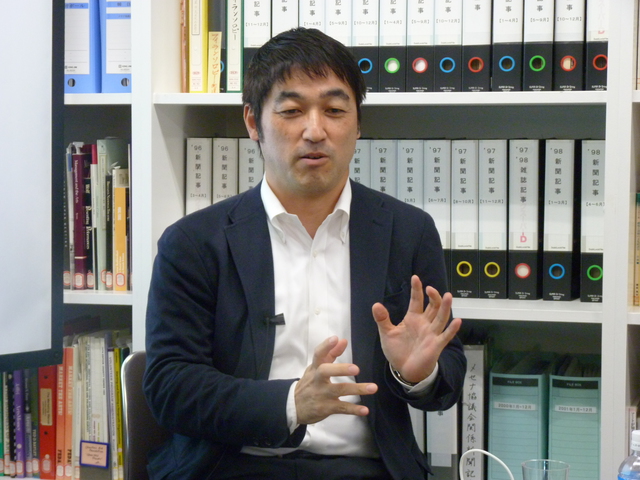
To Remember and Pass on the Memories and Experiences
Ohsawa: One of the challenges of learning and preserving the lessons gained from an experience is that it is difficult to keep alive sad and painful memories.
Nagata: There are experiences that can be learned by having fun, but there are of course sad experiences too. In fact, I made a very big mistake once. I once took a board game for a school class, from which children could learn about disaster prevention and let the children play with it. It was a great success in itself but as there was about 15 minutes left, the teacher thought it was a good idea to recite a picture book about a sad story of a child who dies in an earthquake disaster. From the children’s standpoint, after the happy excitement of the game, they were suddenly plunged into a sad atmosphere. The children's impressions after the class were, “I regretted laughing during the game.” And some said, “I felt really bad at having laughed so hard,” and even started to cry. When that happens, the teachers will inevitably say, “This game cannot be used anymore.” Greatest care must be paid to the way a lesson is constructed and the way a place of learning is created. If you really want the children to learn about the heart of a disaster, you need to take enough time to do it. Communicating disaster prevention can have a negative effect if you communicate it in the wrong way. I think it's very important to indicate that if you don't create a place of learning in the proper way and take great care for the children’s wellbeing, there is a grave risk of causing unthinkable damage.
Ohsawa: I believe there are experiences that must not be forgotten, but we shouldn’t just have to keep only sad and painful memories, and over time, we should be able to change the way we convey them in order to teach the necessary skills and let them have fun in the process. By doing so, you can also face the things that are difficult to face. I know that painful things must be faced as painful things, but there is a danger of it being forgotten if it is kept at a distance and not faced at all.
Nagata: A kataribe (storyteller) I am very well acquainted with, whose child perished in the Great Hanshin-Awaji Earthquake told me that during a recent kataribe session, some of the children who were listening to the story said without a hint of gilt, “Your story’s heavy and tedious,” which was very disheartening. Our skills and knowledge can be dealt with in any way, but the story of the kataribe is very important and we should listen to it very carefully and keep it firmly in our minds, that I struggle to understand why their reactions have come to be that way. Although on the one hand I feel that you should just scold such children, maybe there are other ways of communication, such as making it into an animation. “To inform” and “to be informed” are not the same, therefore we must continue to think of the ways in which we can inform people, but that, needless to say is a difficult task.
Ohsawa: Unfortunately, it is time. Today’s Mini Mécénat Forum Report was about “Disaster and Art―Exploring the Possibility of Art in Disaster Reconstruction from the Viewpoint of Disaster Prevention” in which I discussed numerous issues with Mr. Nagata. Thank you very much.
Nagata: Thank you very much.
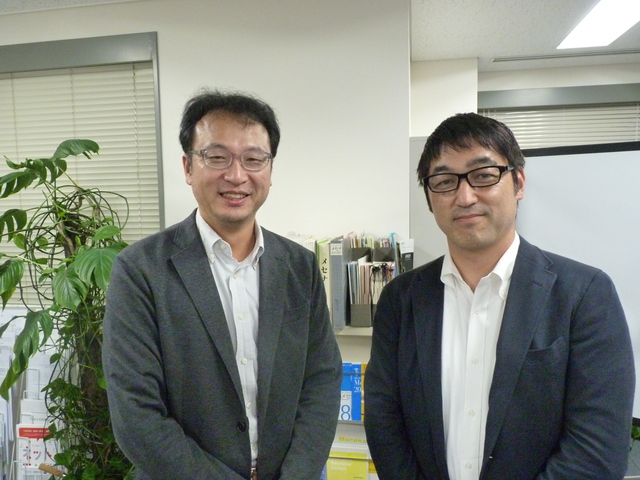
(September 17, 2015)
Video of the discussion (long version)
Text of the full report
Overview of the Event
Mini Mécénat Forum
“Disaster and Art―Exploring the Possibility of Art in Disaster Reconstruction from the Viewpoint of Disaster Prevention”
- Date and Time: Thursday, September 17, 2015 from 16:00 to 17:00
- Venue: Association for Corporate Support of the Arts Secretariat
- Organized by: Association for Corporate Support of the Arts
- Cooperation: Net TAM
- Reporter: Kinnuyo Mukaibou
Net TAM memo
Mr. Nagata, who perceives art as the power that transcends common sense and who has developed a project called Plus Arts. And Mr. Ohsawa, with his experience as a member of the fire brigade, who has explored the perspective of the relationship between disaster and art, as well as society and art. Their activities are diverse.
“Nature is always there. It is important to learn to live together with it by perceiving it as something that is always there, rather than trying to forget it exists.”
“The helplessness that I felt at the time of the Great Hanshin-Awaji Earthquake still remains with me today and I think now is my time to act. There are efforts that can be put to use 10 years later. Even if you can’t take action straight away, it is important to keep thinking about it and try to overcome that helplessness without giving up.”
“When a social crisis occurs that must be faced, we must have faith in the power of culture.” The words of Mr. Nagata and Mr. Ohsawa, who have continued to give considerations and hard work have touched our hearts.
Since the Great East Japan Earthquake, we have been contemplating “The Possibilities of Art in Earthquake Disaster.” From our next issue, we would like to continue to think together about “The Possibilities of Art in Disaster.”

